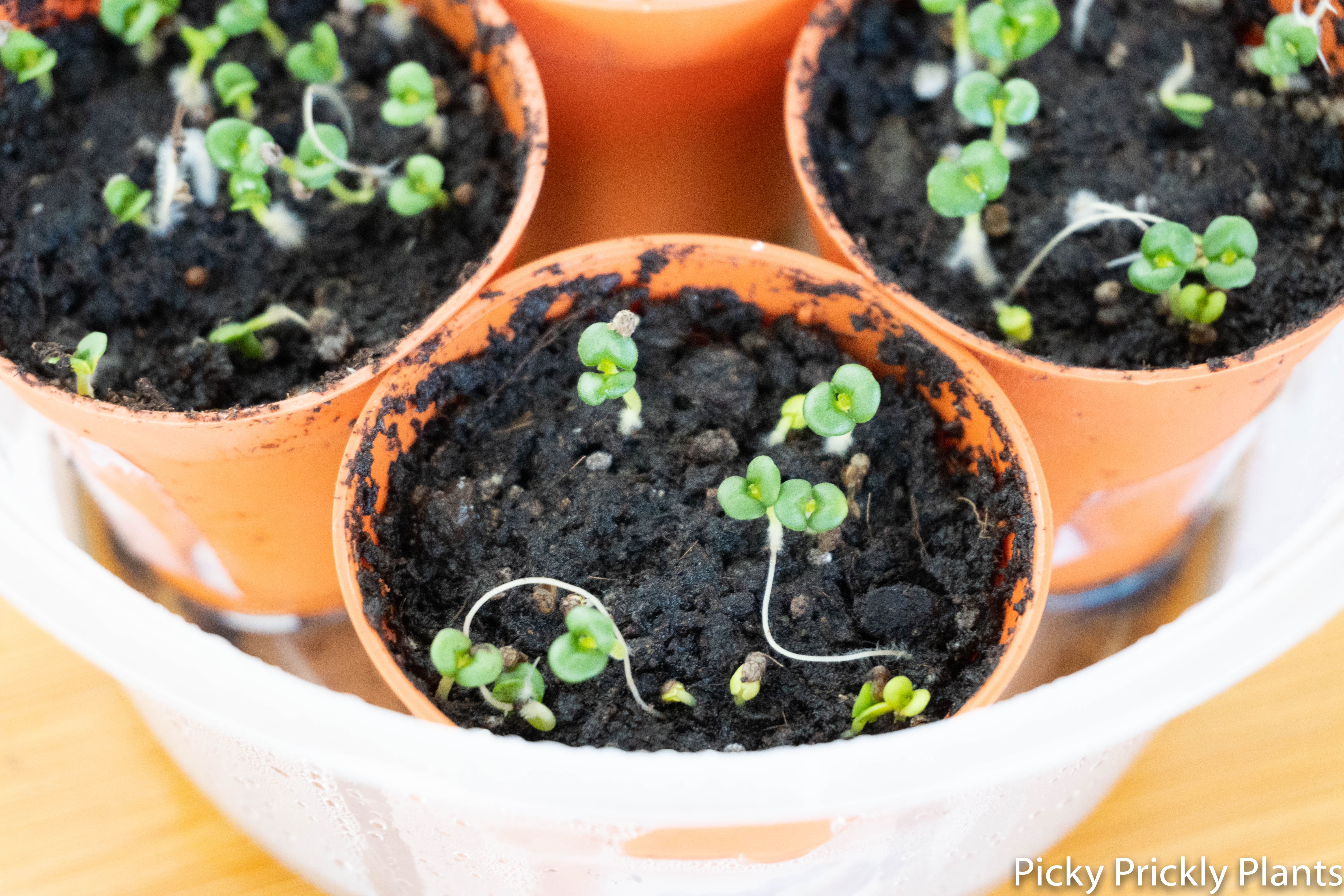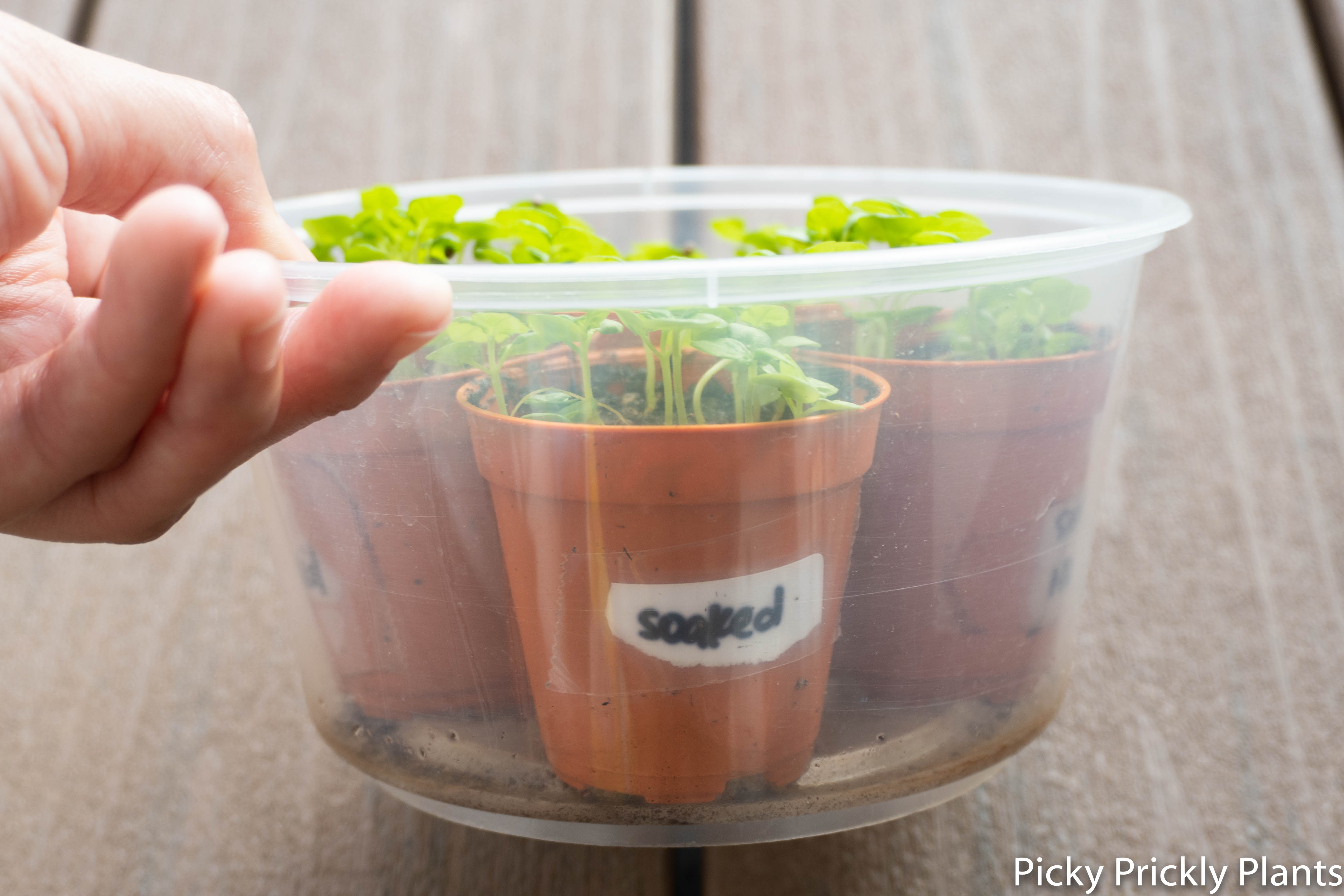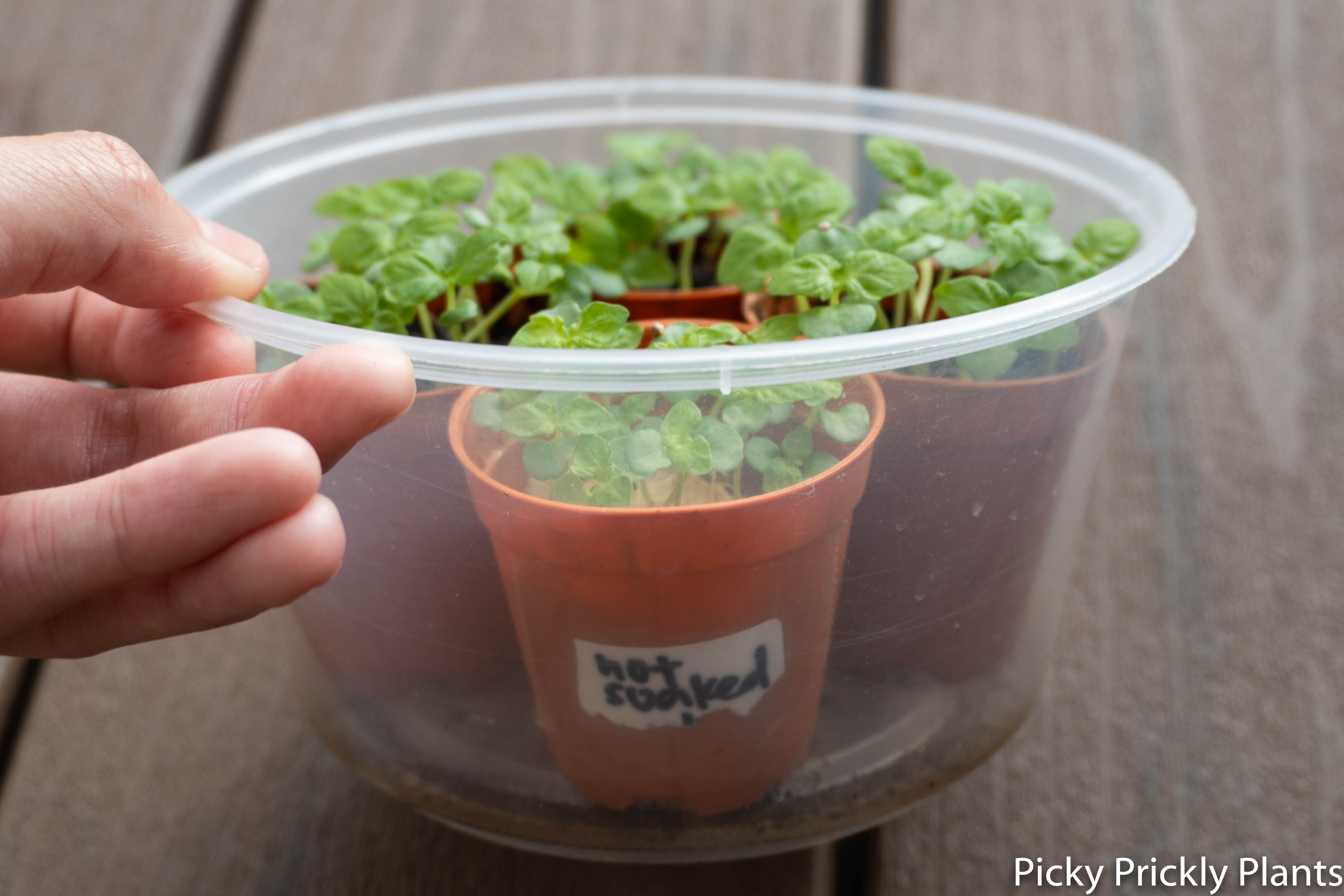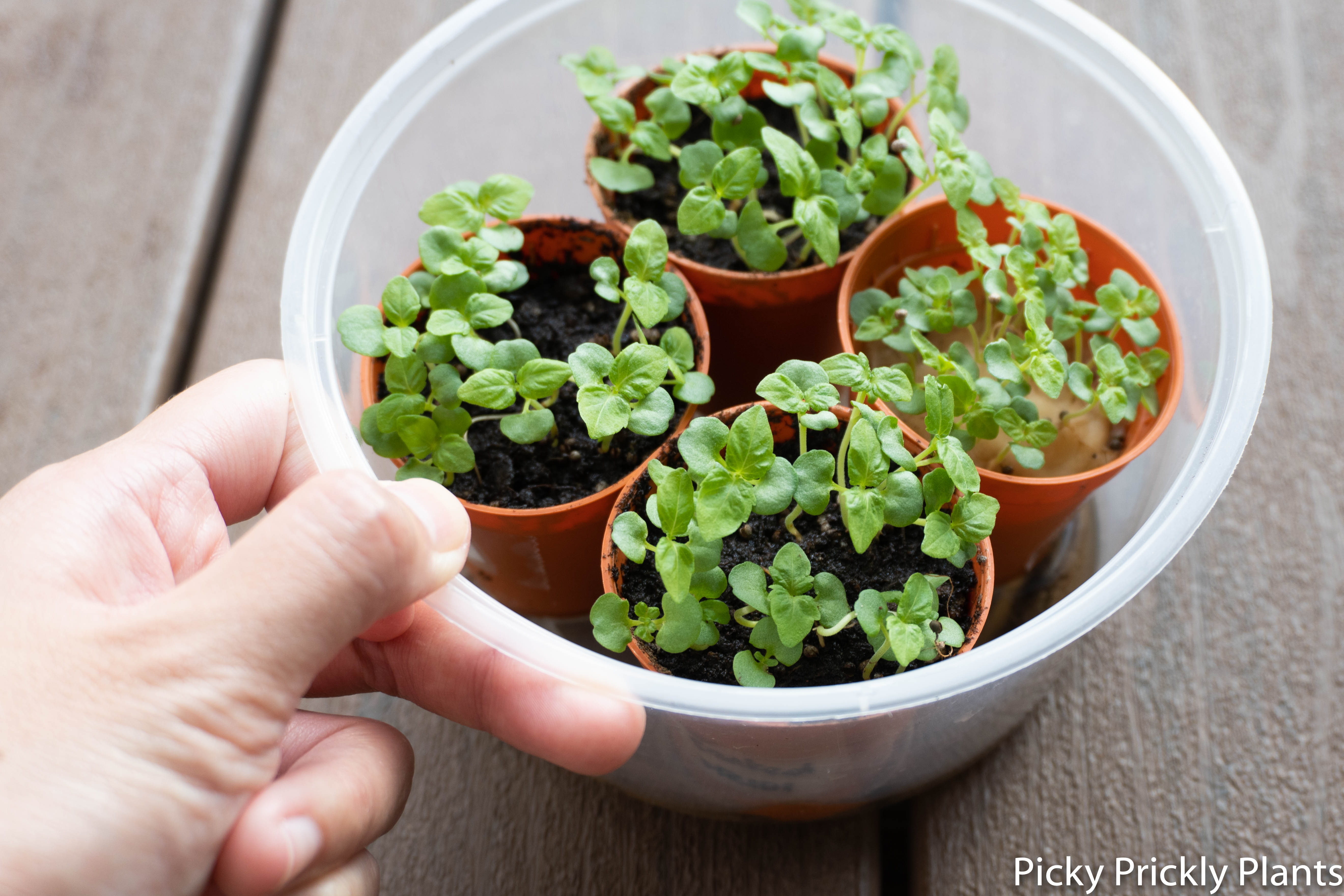We finally took time off this week and I finally can do a follow-up post on our Shiso seed germination experiment. 👩🏻🌾 If you’ve not read the first post – click here!
Note: we sowed these seeds on the afternoon of 30 Aug 2020. I’ve taken the day after (i.e. 1st Sep) as Day 1 for the purposes of this post.
Our observations
1. Soaked seeds have a much higher germination rate
One thing was extremely clear: all seeds which were not soaked and not grown in 100% humidity did not germinate at all. On the other hand, the seeds which were soaked the night before germinated pretty well.
Day 2: Germination progress (2nd Sep 2020)
These soaked seeds were not placed in a covered humidity container. We placed them exposed in a shaded area with occasional indirect light. Just after 2 days, some seeds had already germinated!


Day 12: Growth progress (12th Sep 2020)
By the 12th day, the (soaked) seeds germinated in soil had already grown a lot. We had to ‘trim’ down a couple of the weaker ones (i.e. frail-looking ones or seedlings which germinated slower) so that they wouldn’t suffocate each other.

By this point, it was clear to us that the non-soaked seeds were not germinating at all. We didn’t take a shot of the non-germinated seeds at the 12th-day mark, but here’s one we took at the 4th-day mark.

Lesson learnt: soak your seeds beforehand, or… simply germinate them in a 100% humid environment!
2. Seeds germinated in 100% humidity also have a high germination rate
As mentioned in Part 1 of this post, we wanted to experiment whether we could similarly germinate Shiso seeds in a covered container (like cacti seed germination). We also wanted to test if, in this scenario, there was a need to additionally pre-soak the seeds.
Well, after 4 days of sowing these seeds, all seeds had a similar germination rate; whether soaked or not soaked.

As you can see from the images below, at the 4th-day mark, it even seemed like the seeds which weren’t soaked had a higher germination rate!


Day 12: Growth progress (12th Sep 2020)
The results were even more obvious at the 12th-day mark: when germinated in a 100% humid environment, the seeds that weren’t soaked (whether in cotton pads or in soil) were growing as healthily as the others.


A picture paints a thousand words (okay in this case maybe just a couple of words) – so let’s take a look at some photos!
Conclusion: if you don’t want to pre-soak your seeds, germinating them in a covered container (we reused a takeaway plastic container) can also give you high germination rates.
*Note: remove the lid to allow your seedlings to grow better
Do take note however once the seedlings are strong enough, you should remove the cover (for fresh air and ventilation). Plants, young or mature, grow the best when exposed to natural light and air. We removed the lid off this container from the 12th day since our seedlings were growing well by then.
PS. Humans grow the best too when exposed to natural light and air. If you’ve been staring at the screen for too long in an enclosed space, open your windows and take in some nice fresh air! 🌿
3. Seeds germinated in soil grow up healthier
One question which I was personally interested in was – why do people germinate seeds using cotton pads? Does this increase the germination rate? #Throwback to primary school days when we germinated green beans in a plastic cup using cotton wool. 👧🏻🌱
Nevertheless, we found that seeds germinate well both in cotton pads and soil. However, what we noticed was as the seedlings grew, their growth seemed to be restricted by the cotton pads.

Day 29: Seedlings in cotton look frail and yellow
After almost 1 month of growth, the difference between the cotton pad seedlings and the others grown in soil was pretty obvious.
On the left, the seedlings still stuck on the cotton pads look frail with yellowish leaves. It’s almost as if they are yelling, “Get me out of this miserly cotton thing ASAP!” (I’m sorry little ones 🙇🏻♀️)
Whereas on the right, the seedlings growing in soil appear to be flourishing.


What we also discovered? It is extremely troublesome to separate seedlings grown in cotton pads. Since removing the seedlings from the cotton pads entirely is impossible (and would damage their very frail root system), you would have to cut the cotton pads and bury them into the soil. Not too ideal of a situation in my opinion.
Perhaps it is the easy access to cotton pads (as opposed to buying an entire pack of soil) or the perceived cleanliness of doing so that makes this method a popular one.
Personally, we definitely prefer germinating seeds directly in soil!
4. HB101 enhances the seedlings’ growth
Finally, the question which has been covered in numerous forums and plant blogs. Disclaimer: Although we are believers and regular users of HB101, we thought it’ll be interesting to include this variable in our experiment.
HB101 did not really speed up or increase the germination rate
After comparing the photos, this conclusion really came to us as a surprise. As seen from the images below at the 4th and 12th-day mark, all seedlings had a somewhat similar germination rate.


However, this doesn’t mean that HB101 isn’t effective. On a closer look, we found that the seedlings fed with a diluted HB101 solution were growing stronger and healthier as days went by.
HB101 seedlings were visibly stronger after 3-4 weeks
Living up to its name as a “natural plant vitaliser”, we noticed that the seedlings given a diluted HB101 solution were taller, greener and had a healthy ‘glow’.
(Side note: we noticed this healthy ‘glow’ effect quite a while back when we first tried HB101. Since then, we use a few drops of HB101 once a week when watering our plants. When our plants look happy, we’re happy too 😁)



Whilst the difference wasn’t that noticeable during the first 2 weeks or so, after about 3-4 weeks, we began to see the “HB101 effect”. These photos were taken on Day 26.


In fact, the Shiso seedlings in the pot on the left has by now grown a lot bigger and healthier. Can’t wait for them to grow into mature adult plants! 🎓
Conclusion: soaked seeds, soil and HB101
So what’s the overall conclusion from this experiment? Conducting the experiment was a lot easier than doing up this post. 🙈 🤣
Jokes aside, I guess it really depends on what’s your preference as a grower. All methods work relatively well and there are alternatives to supplement each method. That being said, what’s my preference after this experiment?
- Pre-soak seeds before germinating them. Javier might not agree with this point, but I prefer plants to grow whilst exposed to natural air and light. Covering them in a container can get a little messy and gives off a musky smell. But yup just a personal preference. 🙂
- Germinate them directly in soil. Most plants grow in soil in their natural habitat so germinating them directly in soil would be best. The hassle of cutting up the cotton pad and stuffing them into the soil thereafter is just really not my kind of thing. 😅
- Use HB101 to ‘vitalise’ (or pamper) your plants. Just try it yourself! It’s a little costly (and we’re in no way affiliated to HB101 in case you’re wondering lol), but you’ll only be convinced if you see the ~glow~ firsthand. 😂
If you’re a fellow gardener; aspiring, novice or expert, hope our little experiment helped you one way or another.
Let’s Grow Together 🌱
Jiamin





One thought on “Part 2: Should you pre-soak seeds? Germinate in soil or cotton pads? Ft. Shiso Plant”